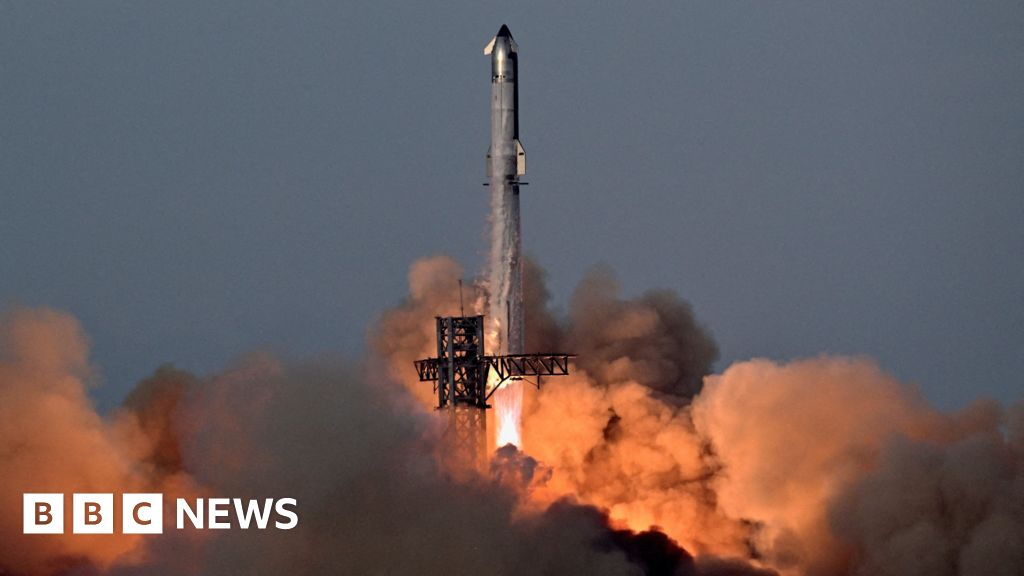SpaceX successfully launched its newest generation rocket, Starship, marking a significant comeback from past failures. The launch occurred at 18:30 local time in Texas and lasted for 60 thrilling minutes, showcasing the world's largest rocket's capabilities. Despite experiencing some engine issues and flaps igniting during ascent, the mission demonstrated potential for the rocket to carry astronauts to the Moon under NASA's Artemis program.
CEO Elon Musk shared his excitement on social media, celebrating the achievement after a series of setbacks earlier this year. The current flight featured all 33 engines firing perfectly, with the booster separating and the Starship spacecraft achieving nearly 200km altitude. While the flight showed signs of possible stress, including flaps burning and swinging, SpaceX aims to make Starship a fully reusable rocket system, essential for future space exploration endeavors.
As NASA prepares for the Artemis program set for 2027, Musk envisions human travel certification for Starship as early as next year, alongside potential uncrewed missions to Mars. The ambitious vision comes after three consecutive failed launches this year, raising questions about SpaceX's future and Musk's political engagements. Nevertheless, the recent flight signifies hope and progress for the rocket, which needs to validate its reliability and safety for human missions.
CEO Elon Musk shared his excitement on social media, celebrating the achievement after a series of setbacks earlier this year. The current flight featured all 33 engines firing perfectly, with the booster separating and the Starship spacecraft achieving nearly 200km altitude. While the flight showed signs of possible stress, including flaps burning and swinging, SpaceX aims to make Starship a fully reusable rocket system, essential for future space exploration endeavors.
As NASA prepares for the Artemis program set for 2027, Musk envisions human travel certification for Starship as early as next year, alongside potential uncrewed missions to Mars. The ambitious vision comes after three consecutive failed launches this year, raising questions about SpaceX's future and Musk's political engagements. Nevertheless, the recent flight signifies hope and progress for the rocket, which needs to validate its reliability and safety for human missions.





















